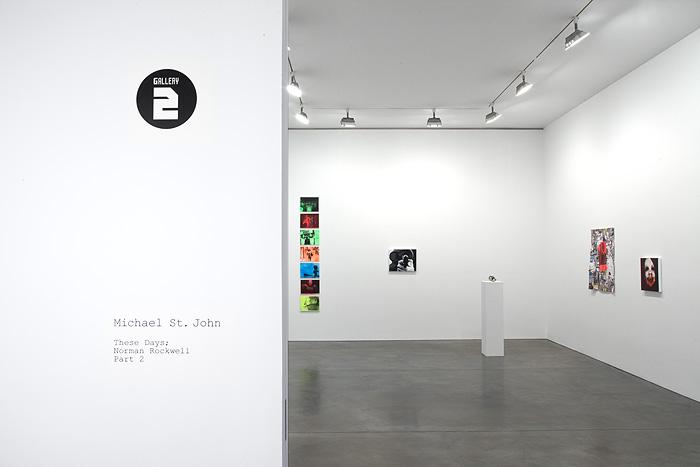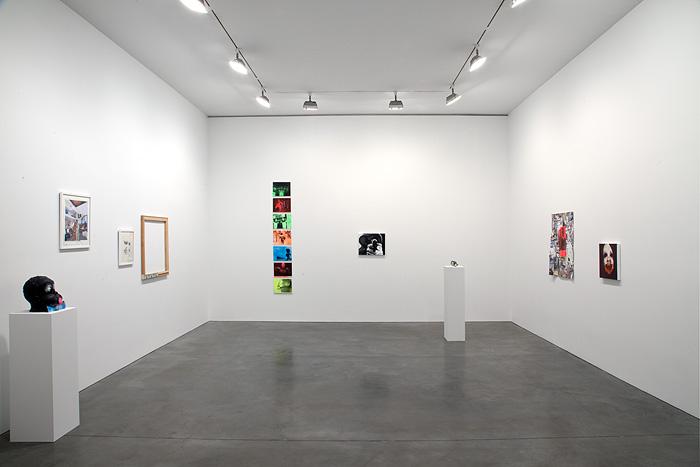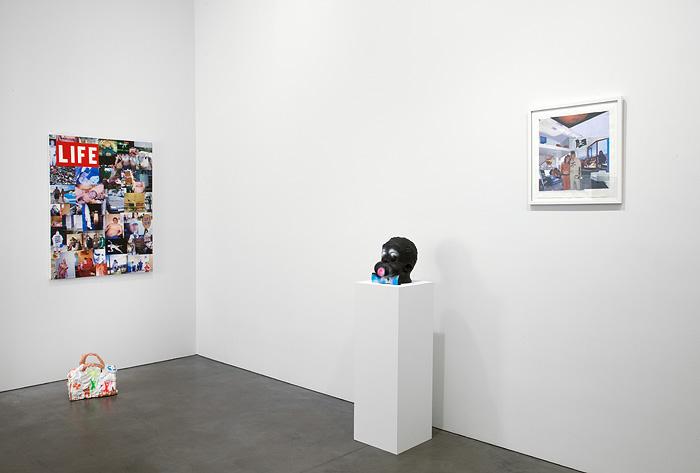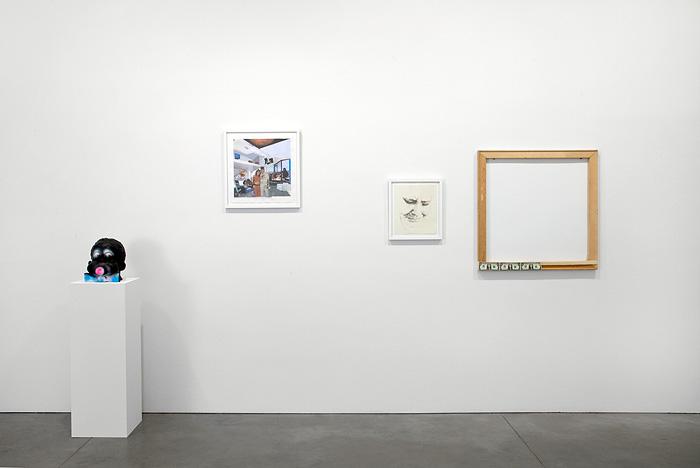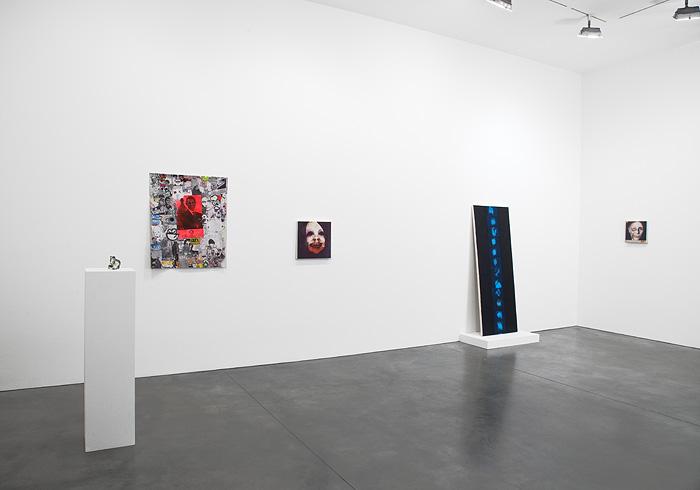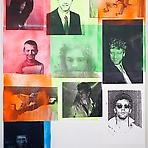Michael St. John
These Days;Norman RockwellPart 2
September 10 – October 16, 2010
Gallery 2
For over 20 years Michael St. John has been creating an ever growing inventory of America's complicated, non-hierarchical and chaotic culture. St. John's work is a brutally honest portrait and yet ultimately suffused with an incredible sense of optimism. This complex juxtaposition of clarity and hope is what makes the work vulnerable, heart wrenching, and simultaneously attractive. It is clear to see St. John's influence, either inadvertently or directly, as a teacher and mentor on a younger generation of artists like Dan Colen, Gardar Eide Einarsson, Nate Lowman, and Josh Smith, to name a few.
The title of the exhibition, "These Days; Norman Rockwell Part 2," reflects how St. John's work operates between the twin axes of reality and idealism. "These Days" brings to mind the world weary lyrics of the Nico song of the same title while "Norman Rockwell" points to how this group of works, in its presentation of America, becomes almost perverse in its normality.
Eschewing spectacle, St. John's modestly scaled works highlight the power of everyday objects and images and insists on the cultural currency they can have. The objects and images St. John re-presents are at once banal in their ubiquity and yet made strange by the new contexts he provides for them. St. John's process mimics the evolution of culture itself. The life of the song "These Days"—written by Jackson Browne when he was a teenager, performed by Velvet Underground collaborator and Warhol muse Nico, given renewed prominence in the 2001 Wes Anderson film The Royal Tenenbaums—reflects the kind of constantly renewing and shape-shifting culture that St. John's work represents. With each iteration and re-presentation the song accrues new meaning.
For St. John, the deep psychosis and trauma of American culture is not hidden but rather, very plainly in full view. In his own updated version of Richard Hamilton's 1956 collage "Just what is it that makes today's homes so different, so appealing?," St. John seems to present the question, what kind of society simultaneously creates and desires an iPhone as well as accepts a Big Mac as actual food. As disturbing as it can be to see this collection and juxtaposition of contemporary consumer objects, St. John's reference to Hamilton's work from an earlier time reminds us how the veneer of history can begin to make anything seem as quaint and neutral as a Norman Rockwell and simultaneously calls into question the veracity of that neutrality.
The diversity of St. John's techniques and styles speaks not only to his facility as an artist but also to the ever expanding universe of images and products in the real world. The ideology of the gallery space with its purposeful removal of the real world from its walls makes St. John's injection of these images back into the gallery all the more striking. St. John's constellation of objects include a painted plaster sculpture of a bag titled "Swag" in the style of the formerly coveted though perhaps always gauche Takashi Murakami and Louis Vuitton collaboration, an extremely foreshortened oil on canvas painting of a gun pointed at the viewer, a polychromed cast plaster race head, a tromp l'oeil sculpture of a $1,000 bill titled "Untitled" (Escort Money), and collaged canvases of images from blogs.
St. John's work achieves the remarkable feat of being both incisive and direct in its political urgency while remaining compelling, mysterious, and without resorting to didacticism. Reflecting "a belief in reality as it exists," St. John's work holds a mirror to America "using all forms of re-presentation to commemorate/echo our time." St. John's work feels as necessary and essential to these days as the necessity he feels in making it: "I cannot think of making art not engaged with the living world at this time."
Michael St. John lives and works in Massachusetts and New York. This will be St. John's 10th solo exhibition in New York. He has also been included in numerous group exhibitions. Along with an extensive resume of curatorships, St. John has held numerous teaching positions including his position as an adjunct professor at New York University since 1994.
For press information please contact Jessica Eckert, j.eckert@rosengallery.com or Renee Reyes, r.reyes@rosengallery.com
Michael St. John: These Days
Published by Karma Books.
(September 12, 2013)
ISBN-10: 1938560345
ISBN-13: 978-1938560347
Product Dimensions: 11 x 8.5 x 0.9 inches
